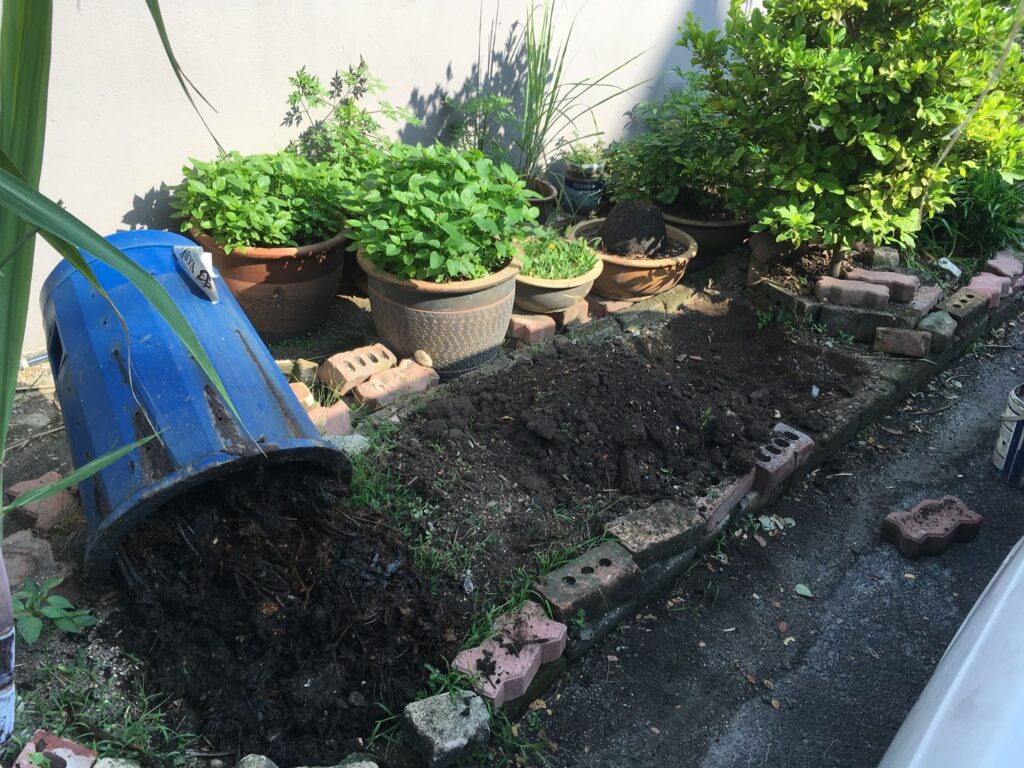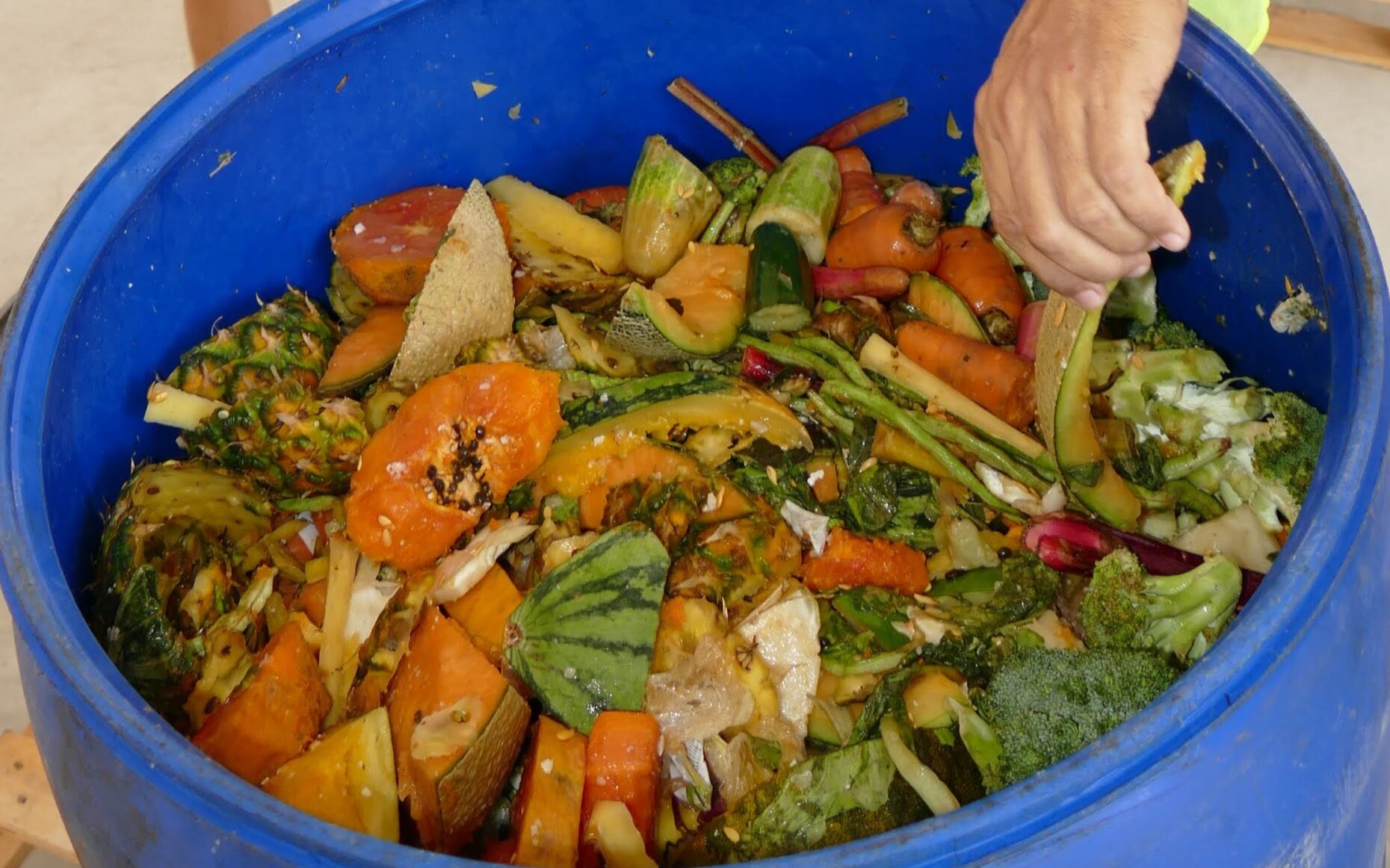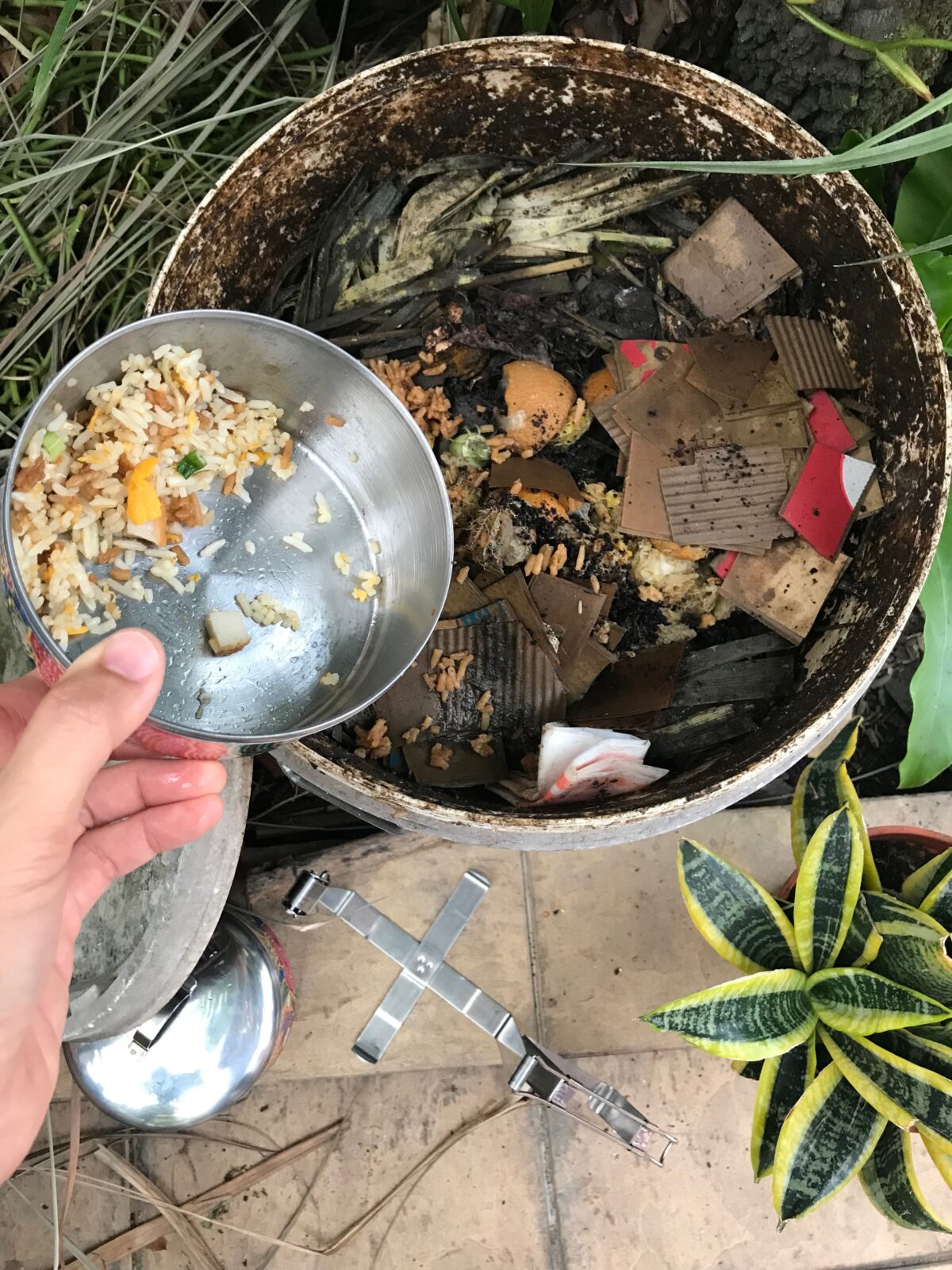“She Mei, remember to sun dry the expired bread for grandpa to feed the chickens,” said my mom to me when I was a teenager.
That was how my mother informally taught me to save food as animal feed when I was small.
My mom was born and bred in Lukut town (Negeri Sembilan). When grandpa was still alive, I remembered him rearing chickens and ducks in the village. Every time we visit him in the village, we will bring bags of dried bread for him to feed to the livestock.
We did not talk about food wastage back then.
Food was never wasted as it can be fed to self-raised animals in the kampung.
But as we live further and further away from village life, the spirit to co-exist with the environment is dampened. We no longer see nature as our solution but rather, create various egocentric solutions that we think can replace the wonder of nature.
The solution I am referring to is the dominance of food composting machines in the market.
A quick search in Google on food composting machine will show you the array of choices for composting machine that you can purchase for use at home or workplace.
But do you really think one blinking stainless steel box can churn up food waste and give you compost or fertilizer within 24 hours (as promised by machine supplier)?
Think again.
Based on my experience in waste management, here is my sharing on why I think a composting machine should not be your ultimate solution for food waste.
(1) Poor Quality of Compost
A natural composting process degrades food waste into matured compost (an earthy, tea smelling, soil-like fluffy textured black gold) for three months before application to plants.

The blue bin on the left is a compost bin I bought from Eco Knights for my mom’s garden. I harvested the black soil (compost) after a few months of mixing food waste with some dry leaves and twigs for an effective composting process. The black soil is full of nutrients and rich with microorganisms that are beneficial for plants.
Most composting machine sellers will show you that after 24 hours of input food waste into the machine, you will get similar black soil as the above.
However, you will start seeing the differences the moment you apply it to your plants. Most of the feedback we heard in the market are that the leaves of their plant start yellowing and growth of white fungus is observed.
Hence, machine supplier will advise for the “compost” to be set aside for another 12 weeks before plant application. That would mean time cost and added operational cost to package and store the “compost” for further degradation and maturation to take place.
(2) High in CAPEX and OPEX
Plenty of our clients told us a composting machine easily cost them a bomb (about a few hundred thousands for a 500kg per day capacity machine). Don’t forget a machine of such depreciates in value over time. On top of that, a surge in electricity bill was observed after operating the machine.
This is understandable as our food waste is high in water content. For the machine to produce compost output that is dry (mimicking the fluffy texture of real compost) within 24 hours, the composting machine must be able to dehydrate food waste. As a result of that, high heat energy is required.
On top of that, composting machine works well with the presence of effective microbes (EMs). EMs are a mixture of a variety of beneficial microorganisms that act as inoculants to increase microbial diversity, mimicking the real soil ecosystem in a natural composting activity. There is a certain lifespan for EMs to thrive and a new batch of EMs need to be added into the composting machine once the previous EMs sort of expired. EMs are costly and require companies to set aside budgets in order to maintain the operation of composting machine.
(3) Not All Food Waste is Machine-Compostable
Based on our experience of using a composting machine, certain food waste that are oily and greasy did not go well in the machine. It tends to choke up the machine as if having stomachache or indigestion. We Malaysians love our curry, gravy and soup! Liquid food like these are also definite NO for a machine to work effectively.
Additionally, hard bones like pork knuckles and shells are not friendly for the machine too. After 24-hour of sitting in the machine, you will find bones from the discharge of the compost.
It goes back to square one where food waste generators would have to segregate these food from the beginning, before inputting into the machine. At the end, large hardy organic waste and liquid based food would have to be diverted to landfill.
Not One Size Fit All Solution
Some of you may not fully agree with my points above as there is not much information out on the web evaluating the feasibility and efficiency of composting machine in Malaysia.
It got me worried to see many companies opting for composting machine and shout out how they are achieving their sustainability targets by having an on-site solution for the food waste disposal issue in their premises.
A composting machine is indeed a neat and presentable food waste solution.
But it is not a miracle box that can degrade all kinds of food waste in one go like how Mother Nature does it.
Hence, is it really worth spending hundreds of thousands to purchase a machine, then another few thousands on a monthly basis to operate and maintain it – only to realise later that the compost quality is poor that it is not saleable nor applicable to plants immediately and a dedicated person needs to painstakingly look after the machine?
I personally assume that if the following points are ticked (all at once), a composting machine should be able to solve your food waste problem:
- very low failure rate for the machine’s mechanical parts to breakdown
- only input solid food waste
- affordable price for a Malaysia-made machine
- availability of space large enough to accumulate and and store the 24-hour-compost for another 12 weeks for maturation
- skilled and dedicated person to operate and maintain the machine
If these criteria are not met, then I would suggest companies to go for off-site food waste solutions. I will share more pragmatic solutions on food waste issues in my next article.
Let me know what you think about this content or feel free to connect to me at shemeigreen@gmail.com 🙂
P/S: The intention of this article is purely to share what I have learned so far from operating food composting machine at commercial level. It is not intended to defame or slander any specific seller of composting machine.



